Made in America Polestar 3 debuts; throwback electric muscle car Dodge Charger Daytona ready to rumble; VW’s microbus inspired ID. Buzz hits the road; and Jeep and GMC go big
Made in America Polestar 3 debuts; throwback electric muscle car Dodge Charger Daytona ready to rumble; VW’s microbus inspired ID. Buzz hits the road; and Jeep and GMC go big
In the final quarter of 2024, several long-awaited EV models finally made their way into Canadian driveways and charging stations. As the demand for ZEVs in this country continues to grow, so too does the selection of EVs available. Prospective purchasers can now consider a VW bus, a Dodge muscle car and some new powerful and slick SUVs and pickups.
Here are sone of the new offerings in Q4 of 2024, ending the year with a bang.
2024 Polestar 3
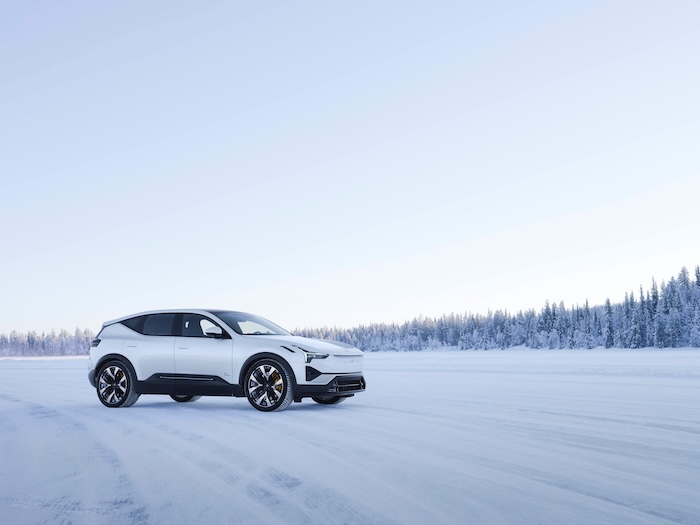
After some critical success and encouraging sales numbers with Polestar 2, a high-performance China-built electric hatchback, Polestar enters the mainstream with its move into the dominant passenger vehicle category: SUVs.
The Swedish automaker’s Polestar 3 barely looks the part, its profile low and swooping, but it is a full five-seater and packs a lot of punch. It comes in six trim levels, with suggested pricing from $93,200 to $107,200.
It does not qualify for federal purchase incentives.
The base model features dual motor AWD configuration and the 400-volt, 111-kWh lithium-ion battery pack delivers a reported range of just above 500 kilometres — an impressive number for a big and luxurious cruiser. There is a “performance upgrade” available which improves acceleration, though it comes at the expense of a 10 per cent range reduction, down to 449 km.
Also of note to the technologically minded, the Polestar 3 has “active air suspension” which constantly adapts to road conditions and driving style, automatically raising and lowering ride height to optimize aerodynamics at different speeds. It is also handy for raising to max height when on rough roads.
Even in base trim, this should be fun to drive.
Equally momentous for the company, the Polestar 3 is being built at their first plant in North America. Polestar 3 models sold in Canada, the U.S. and Europe will be manufactured in Ridgeville, South Carolina to avoid new tariffs on China-built EVs
The Polestar 3 is already in dealerships in B.C., Ontario and Quebec and will be throughout the country in early 2025.
2024 Dodge Charger Daytona
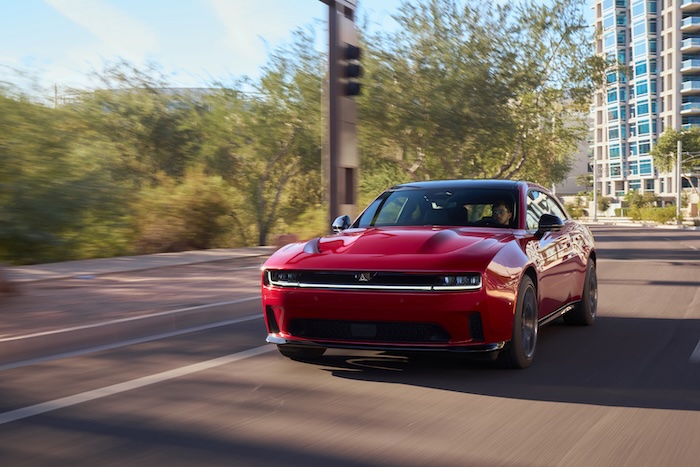
In the world of muscle cars, Dodge has pedigree. Now, it’s reinventing itself for the future.
The 2024 electric Dodge Charger Daytona is a modernistic reinterpretation of its classic namesake — complete with the burbles, pops and roars of a muscle-bound V-8 (even if they are produced by a feature Dodge is calling a “Fratzonic Chambered Exhaust”).
Charger Daytona marked the debut of Stellantis’s new company-wide STLA large BEV-native platform, which is strong enough to handle the stress and torsion of this EV’s 400-volt dual-motor system. Power is delivered to all four wheels by dual front and rear motors. The front EDM disconnects when not required, improving range and efficiency. Predicted range is 496 km for the R/T and 388 km for the Scat Pack edition.
Designed to maximize acceleration, the 93.9-kWh Li-ion battery has a (briefly boosted) peak discharge rate of 550 kW. According to the Dodge marketing department, the nickel/cobalt/aluminum chemistry of the battery cell produces maximum power per gram — “the battery-electric version of high-octane fuel,” says the brochure. The company claims it takes 33 minutes to charge the battery from 20 per cent up to 80 per cent on a fast charger with a max charge rate of 183 kW.
Sales in Canada began in December in B.C., Ontario and Quebec and the Charger Daytona will be rolling out across the country in first quarter of 2025. Dodge is launching the marque as the first electric muscle car with two souped-up two-door models ranging from $55,000 to $87,000. Less expensive models and a four-door version are coming in 2025.
2025 Volkswagen ID. Buzz
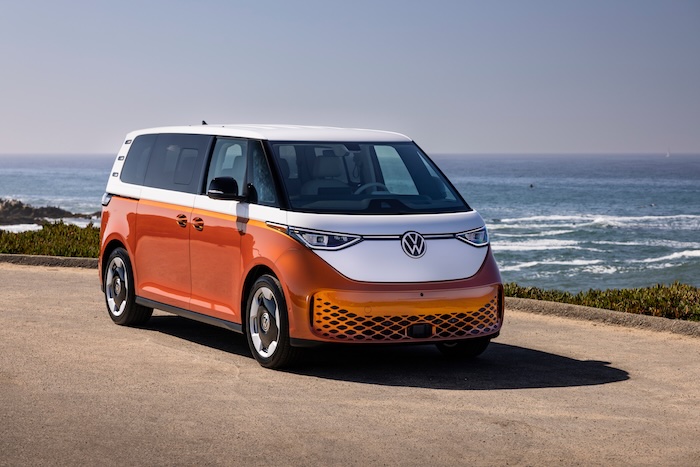
When it comes to nostalgia, Volkswagen has the auto market cornered.
Enter the ID. Buzz 1st Edition.
Using the same modular EV platform that underpins many VW and Audi electric models, the Buzz offers two drivetrains. The rear-only version is driven by a 210 kW electric motor, while the all-wheel-drive Buzz is powered by 250 kW motor. Claimed range on the rear-drive is 377 km, with AWD slightly lower at 372 km. Both drivetrains employ a high-voltage traction battery with 91 kWh and a maximum charging rate of 200 kWh (on DC fast chargers). The manufacturer claims that enables the battery pack to charge from 20 per cent to 80 per cent capacity in 26 minutes.
As for the exterior, the boxy silhouette hints at the van’s iconic predecessor — but this is an aerodynamic 21st-century people mover with the expected appointments (lots of LED lighting in and out, big screen, heads-up display) in a spacious interior. With optional third row, it offers seating for up to seven.
VW’s suggested pricing for RWD is $80,631 while the 4Motion edition starts at $86,131. Both are well over the $60,000 limit for vans to qualify for federal EV incentives.
2024 Jeep Wagoneer S EV
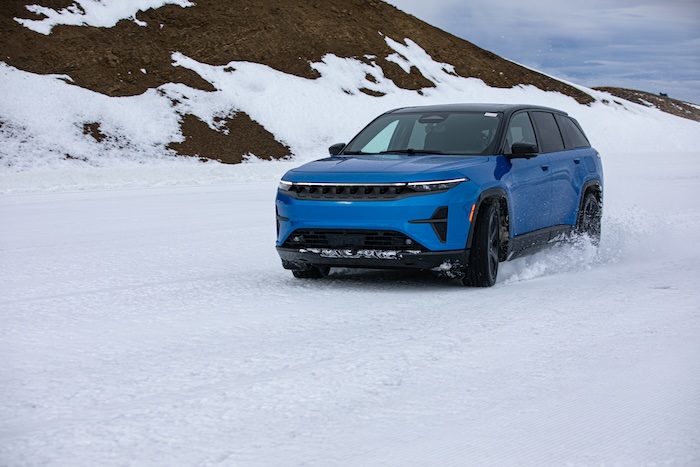
Also on the Stellantis STLA platform is the all-new Jeep Wagoneer S EV, destined to be the marque’s first global battery-electric vehicle.
Curiously, the electric Wagoneer S five-seater, despite sharing a name, is significantly smaller than the extra-large combustion-engine Wagoneer, Wagoneer L and Grand Wagoneer models.
The dual-motor system on the S, powered by a 100 kWh battery pack, provides over 480 kilometres in range. This is due largely to the fact that, unlike most Jeeps, this one is downright aerodynamic, with a drag coefficient of just .29.
Inside the vehicle, Jeep has doubled down on end-user technology, with multiple dashboard monitors, electronic sunroof and other fancy gadgets and gizmos.
Available now in Quebec and B.C. at an MSRP of $93,485, the Wagoneer S will roll out cross-Canada in 2025.
2025 GMC Sierra EV Denali
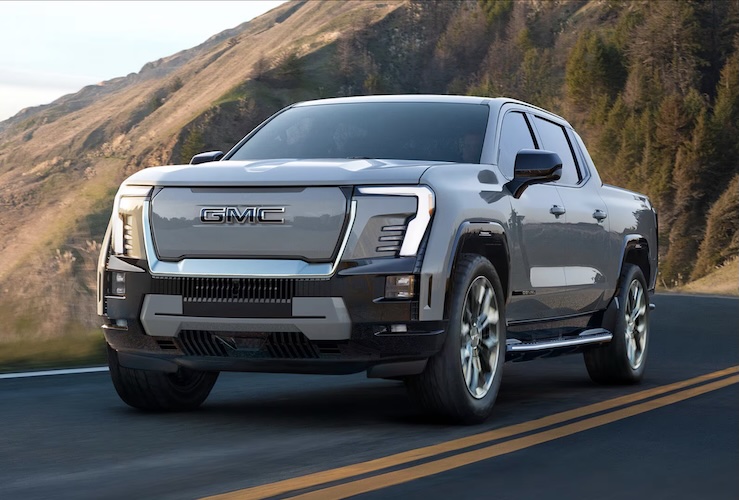
The GMC Sierra EV Denali pickup is fully, loaded even when the bed and frunk sit empty.
In addition to its 600-plus kilometre range (upgradeable to 740 clicks), the truck offers an impressive array of performance, comfort and technology features.
At the heart of this behemoth crew cab is a 205 kWh battery charged by a massive 800-volt system. GM promises 49 minutes to charge the Sierra EV up from 5 per cent to 80 percent on a DC fast charger.
And with GM’s “Power Station Pro” and power bar, more than 10 kW of that power is available for take-off through outlets to run equipment on a job site or a campsite. It has a towing capacity of more than 4,700 kg when equipped with optional Extended Range Battery.
Also very handy in a vehicle this large (particularly when about town), is GMC’s version of all-wheel steering, in which all four wheels can pivot, reducing the truck’s otherwise huge turning radius and improving manoeuvrability. At lowest speeds, the system enables the truck’s “CrabWalk” function, in which all wheels can turn in the same direction allowing the truck to move diagonally.
This big truck comes with a matching price tag: $119,333 to start, though GMC is promising less pricy variants in 2025.






